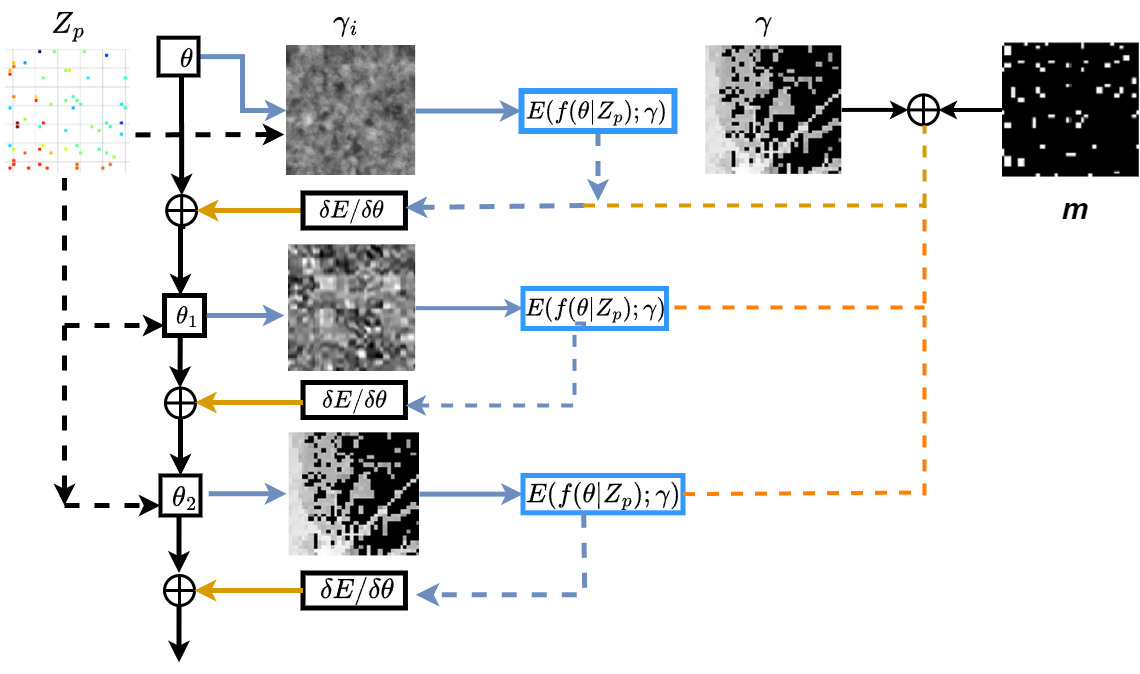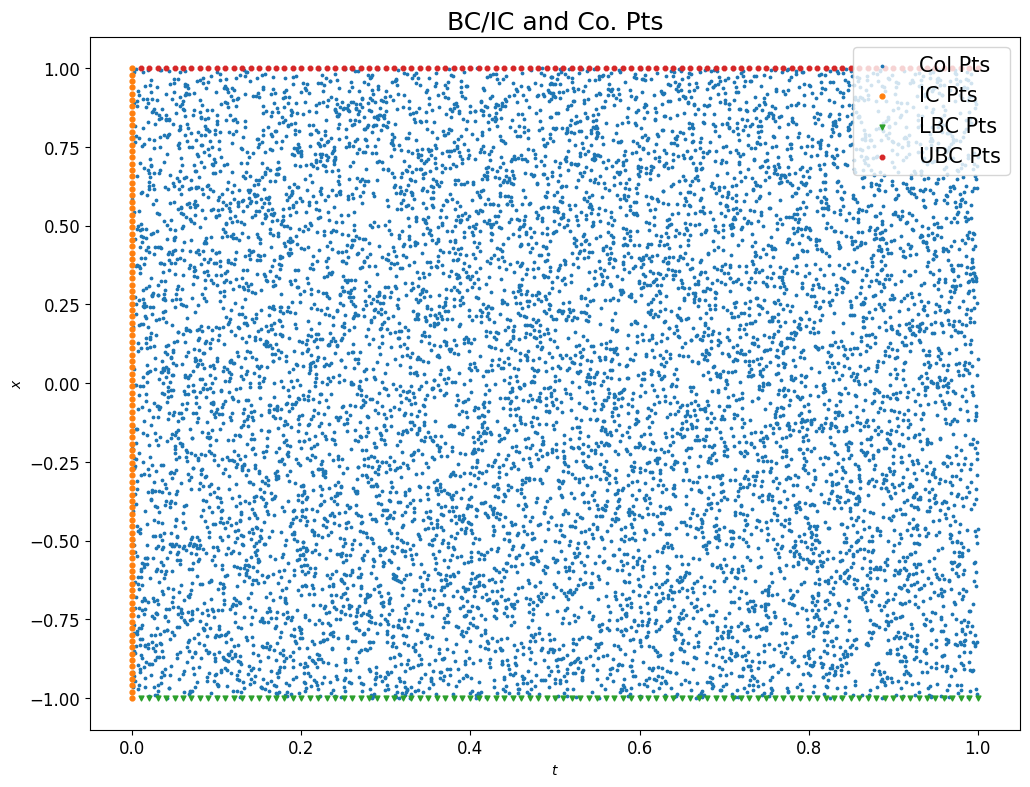Physics-informed generative neural networks for RF propagation prediction with application to indoor body perception
2405.02131

0
0
🧠
Abstract
Electromagnetic (EM) body models designed to predict Radio-Frequency (RF) propagation are time-consuming methods which prevent their adoption in strict real-time computational imaging problems, such as human body localization and sensing. Physics-informed Generative Neural Network (GNN) models have been recently proposed to reproduce EM effects, namely to simulate or reconstruct missing data or samples by incorporating relevant EM principles and constraints. The paper discusses a Variational Auto-Encoder (VAE) model which is trained to reproduce the effects of human motions on the EM field and incorporate EM body diffraction principles. Proposed physics-informed generative neural network models are verified against both classical diffraction-based EM tools and full-wave EM body simulations.
Create account to get full access
Overview
- The paper discusses a Variational Auto-Encoder (VAE) model that can reproduce the effects of human motions on electromagnetic (EM) fields and incorporate EM body diffraction principles.
- This is important because traditional EM body models used to predict RF propagation are time-consuming, preventing their use in real-time computational imaging problems like human body localization and sensing.
- The proposed physics-informed generative neural network model is verified against classical diffraction-based EM tools and full-wave EM body simulations.
Plain English Explanation
The paper describes a new machine learning model that can accurately simulate how the human body affects the propagation of electromagnetic (EM) waves, such as those used in wireless communication and radar. Traditional EM models that capture these effects are very complex and computationally intensive, making them impractical for real-time applications like locating and tracking people.
The researchers developed a Variational Auto-Encoder (VAE) - a type of neural network - that can quickly reproduce the impact of human movements on EM fields. This model incorporates the key principles of how EM waves interact with the human body, known as "diffraction."
By combining machine learning with the underlying physics, the researchers created a physics-informed generative neural network that can generate realistic EM field patterns without requiring detailed, time-consuming EM simulations. This enables real-time applications like tracking people's locations using wireless signals.
Technical Explanation
The paper presents a Variational Auto-Encoder (VAE) model that is trained to reproduce the effects of human motions on the electromagnetic (EM) field and incorporate EM body diffraction principles. VAEs are a type of generative neural network that can learn to generate new, realistic data samples that match the statistical properties of a training dataset.
In this case, the VAE model learns to generate EM field patterns that accurately reflect how the human body interacts with and scatters EM waves. This is achieved by incorporating the relevant principles of EM body diffraction into the neural network architecture and training process.
The proposed physics-informed generative model is verified against both classical diffraction-based EM simulation tools and full-wave EM body simulations. This demonstrates that the machine learning approach can reproduce the complex EM interactions with the human body without requiring the computationally intensive, time-consuming traditional EM modeling methods.
Critical Analysis
The paper presents a promising approach to accelerating EM modeling for real-time applications by leveraging machine learning and incorporating relevant physical principles. However, the authors acknowledge that the current model is limited to specific scenarios and body poses. Further research is needed to expand the generalizability of the approach to handle more complex, unconstrained human motions and body shapes.
Additionally, the paper does not address potential challenges in acquiring the necessary training data for the VAE model, which may require specialized EM measurement setups or detailed computer simulations. The robustness of the model to noise, sensor imperfections, and other real-world factors also remains to be thoroughly evaluated.
While the authors demonstrate the model's performance against classical EM tools and simulations, it would be valuable to see further validation through comparisons with empirical measurements or experiments involving actual human subjects and EM sensing systems.
Conclusion
This research represents an important step towards developing efficient, physics-informed machine learning models for electromagnetic sensing and human tracking applications. By combining the strengths of generative neural networks and the underlying principles of EM wave interactions with the human body, the proposed VAE model offers a promising path to overcome the limitations of traditional, computationally intensive EM simulation methods.
As the field of physics-informed machine learning continues to advance, this work highlights the potential for similar approaches to accelerate the development of real-time, data-driven solutions for a wide range of computational imaging and sensing problems.
This summary was produced with help from an AI and may contain inaccuracies - check out the links to read the original source documents!
Related Papers

EM-GANSim: Real-time and Accurate EM Simulation Using Conditional GANs for 3D Indoor Scenes
Ruichen Wang, Dinesh Manocha

0
0
We present a novel machine-learning (ML) approach (EM-GANSim) for real-time electromagnetic (EM) propagation that is used for wireless communication simulation in 3D indoor environments. Our approach uses a modified conditional Generative Adversarial Network (GAN) that incorporates encoded geometry and transmitter location while adhering to the electromagnetic propagation theory. The overall physically-inspired learning is able to predict the power distribution in 3D scenes, which is represented using heatmaps. Our overall accuracy is comparable to ray tracing-based EM simulation, as evidenced by lower mean squared error values. Furthermore, our GAN-based method drastically reduces the computation time, achieving a 5X speedup on complex benchmarks. In practice, it can compute the signal strength in a few milliseconds on any location in 3D indoor environments. We also present a large dataset of 3D models and EM ray tracing-simulated heatmaps. To the best of our knowledge, EM-GANSim is the first real-time algorithm for EM simulation in complex 3D indoor environments. We plan to release the code and the dataset.
5/28/2024

GLIP: Electromagnetic Field Exposure Map Completion by Deep Generative Networks
Mohammed Mallik, Davy P. Gaillot, Laurent Clavier

0
0
In Spectrum cartography (SC), the generation of exposure maps for radio frequency electromagnetic fields (RF-EMF) spans dimensions of frequency, space, and time, which relies on a sparse collection of sensor data, posing a challenging ill-posed inverse problem. Cartography methods based on models integrate designed priors, such as sparsity and low-rank structures, to refine the solution of this inverse problem. In our previous work, EMF exposure map reconstruction was achieved by Generative Adversarial Networks (GANs) where physical laws or structural constraints were employed as a prior, but they require a large amount of labeled data or simulated full maps for training to produce efficient results. In this paper, we present a method to reconstruct EMF exposure maps using only the generator network in GANs which does not require explicit training, thus overcoming the limitations of GANs, such as using reference full exposure maps. This approach uses a prior from sensor data as Local Image Prior (LIP) captured by deep convolutional generative networks independent of learning the network parameters from images in an urban environment. Experimental results show that, even when only sparse sensor data are available, our method can produce accurate estimates.
5/7/2024

Probabilistic and Differentiable Wireless Simulation with Geometric Transformers
Thomas Hehn, Markus Peschl, Tribhuvanesh Orekondy, Arash Behboodi, Johann Brehmer

0
0
Modelling the propagation of electromagnetic signals is critical for designing modern communication systems. While there are precise simulators based on ray tracing, they do not lend themselves to solving inverse problems or the integration in an automated design loop. We propose to address these challenges through differentiable neural surrogates that exploit the geometric aspects of the problem. We first introduce the Wireless Geometric Algebra Transformer (Wi-GATr), a generic backbone architecture for simulating wireless propagation in a 3D environment. It uses versatile representations based on geometric algebra and is equivariant with respect to E(3), the symmetry group of the underlying physics. Second, we study two algorithmic approaches to signal prediction and inverse problems based on differentiable predictive modelling and diffusion models. We show how these let us predict received power, localize receivers, and reconstruct the 3D environment from the received signal. Finally, we introduce two large, geometry-focused datasets of wireless signal propagation in indoor scenes. In experiments, we show that our geometry-forward approach achieves higher-fidelity predictions with less data than various baselines.
6/24/2024

Label Propagation Training Schemes for Physics-Informed Neural Networks and Gaussian Processes
Ming Zhong, Dehao Liu, Raymundo Arroyave, Ulisses Braga-Neto

0
0
This paper proposes a semi-supervised methodology for training physics-informed machine learning methods. This includes self-training of physics-informed neural networks and physics-informed Gaussian processes in isolation, and the integration of the two via co-training. We demonstrate via extensive numerical experiments how these methods can ameliorate the issue of propagating information forward in time, which is a common failure mode of physics-informed machine learning.
4/10/2024